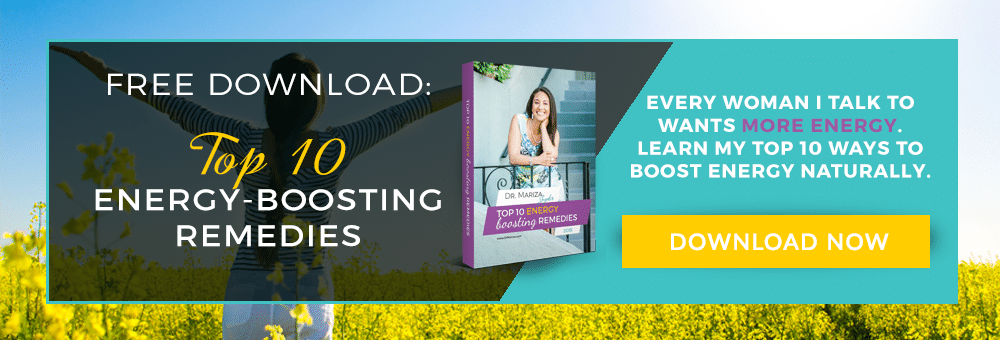You’re a hot mess. Between the brain fog, the mood swings, the lack of energy and your dwindling libido you can hardly keep up with your career, family and home life. If only you could get over this sluggish feeling and maybe get a good night’s sleep. And the hot flashes? Don’t get me started. It’s enough to make anyone think she’s losing her mind! Perimenopause is a time that can seemingly wreak havoc on any normal, sane woman.
What is a girl to do? I know most of us have heard the standard recommendation from our healthcare practitioners: eat better, exercise more, get more sleep, and maybe try hormone replacement therapy. Thanks for the oversimplification, Doc! While we are delving into many ways a woman can support her body during hormonal change, many people don’t realize the impact that exercise can play on maintaining hormonal balance.
As menopause approaches, the shifting of your hormones can cause some unpleasant, life-altering and sometimes detrimental side effects. During our reproductive years, estrogen provides a cardio-protective benefit, meaning that it is beneficial for our heart health. As your estrogen levels decline, your risk for heart disease increases. As estrogen decreases, cholesterol and blood pressure have a tendency to increase, both of which are risk factors for heart disease. To compound matters, your metabolism begins to slow, and without alterations in your nutrition and exercise habits, you start to put on extra fat, especially around your waistline.
YOUR EXERCISE FIX
Here’s where weekly doses of exercise can give you a leg up. Moderate exercise for 30 minutes at least 5 days per week not only helps your body to keep your metabolism up, but it also releases hormones to help lower cholesterol, decrease blood pressure, and shrink those fat cells. And that sluggish feeling that keeps hanging around? Again, regular exercise revs up your metabolism and energy to help you to battle the slump.
Now, about the stress, depression, and anxiety that you may be dealing with as you struggle to keep up with life’s constant demands… When you are in a constant state of stress, your sympathetic nervous system pumps your blood full of cortisol and adrenaline to help you keep up the pace. While these hormones are definitely helpful and needed in limited quantities and for short periods of time, constant exposure to them can lead to burnout, feelings of anxiety and depression, and reduced immunity, as well as increasing your risk for heart disease. In short, things can go totally haywire. For more specific details, be sure to check out my earlier blog Where Did I Go? – Stress, Hormones, & Essential Oils.
Have you ever felt shaky and out of control, heart racing, breathing fast, the room spinning? The accumulation of those stress hormones over time can promote anxiety attacks. The great thing about regular exercise is that at lower-moderate intensities, exercise helps to burn up the excess adrenaline and helps to regulate your body’s production and response to cortisol. On the flip side, exercise also causes your brain to release endorphins and norepinephrine. Endorphins cause us to feel euphoric and relaxed, and norepinephrine enhances our body’s ability to respond to stress.
When it comes to sleep issues, like insomnia, regular exercise is a must. Studies have shown that women who regularly exercise at a moderate intensity have fewer issues with sleep. Sleep issues are a complex problem because not only are our hormones part of the equation, but our stress levels are also a part as well. Why not try going for a brisk walk in the afternoon or early evening? Or try some yoga before bedtime? These activities help our bodies to wind down and dial back the stress hormones, and to release the physical and mental tension that can keep us tossing and turning at night.
As you age, the decrease in estrogen can also mean a decrease in bone and muscle health. Bone mineral density starts to decrease, putting you at risk for osteoporosis and osteopenia. Sarcopenia, which is a loss of muscle mass and strength due to aging, starts to speed up around menopause as well. Now you’re at risk for balance issues, falls, and bone fractures. The good news is that a regular exercise program that includes weight-bearing exercises in conjunction with dietary adjustments can help to slow the progression of muscle loss and prevent osteoporosis altogether.
While most women are aware that exercise helps with maintaining a healthy weight, I believe this fact is definitely worth repeating. During perimenopause and menopause, our metabolism starts to slow down. If your body is also in a constant state of stress and you have poor eating habits, then you have the perfect recipe for weight gain. Please raise your hand if you have a tendency to skip meals or grab the closest salt/sugar/fat-laden snack food you can find when you’re on the go and have too much on your figurative plate! Ladies, it’s time to take action…literally. If you want to get the most benefit out of your limited workout time, take a few of my suggestions and start to implement them into your routine.
ESSENTIAL ELEMENTS OF EXERCISE
Cardiovascular Exercise should be the backbone of your routine. Brisk walking, jogging, bicycling, water aerobics, dancing, any activity that gets your heart rate up…for 30 minutes, on most days of the week (aim for 4-5). You can do this.
How hard should you be working? As a general rule, if you’re breathing too hard then you’re pushing too hard. Slow down a bit. This is where you’re going to regulate those stress hormones, sharpen your mind, and help your body and blood vessels to relax. Gotta do it.
Beware though, that if you increase your intensity too much (for example, you feel out of breath after just a few minutes of exercise), then you could be increasing your stress hormone levels instead of decreasing them. The key to exercising for stress management if you haven’t had a regular routine is low to moderate intensity.
Bear in mind that each person is different and has different fitness needs. Be patient with yourself and find out what works best for you.
Resistance Training should be the second part of your routine. Two times per week, maybe three if you can swing it. You can use free weights (i.e. hand weights), resistance machines (at the gym), resistance bands, or your own body weight, in some cases. Your goal is to work on major muscle groups, including your arms, legs, chest, back, and abdomen. Resistance exercise not only helps to strengthen muscles and bones but, by increasing your muscle mass, you effectually increase your metabolism and your body’s fat burning capacity. In addition, resistance training also helps to decrease insulin resistance, which is one of the complications of weight gain, especially around your abdomen.
Stretching and Flexibility exercises should be the third component of your routine. It can be as simple as stretching your warmed-up muscles after your brisk walk or resistance routine, or you can incorporate something a bit more like yoga or Pilates. Mix it up a bit. The key is to find something that you enjoy. These types of exercise will help you to relax your tense muscles and promote a good night’s sleep.
GAINING AN EDGE FROM ESSENTIAL OILS
Now, I know motivation can be a big issue when sticking to a regular exercise routine, especially trying to integrate something new into your world. Single essential oils combined can really help you to amp up your routine. My go-to blend for focus and motivation always involves Peppermint essential oil and Wild Orange essential oil. It’s no secret that I’m obsessed with Wild Orange, and have been since my first sniff, but this magical combo can perk you up at any point in your day! You can also use Peppermint post-workout for muscle aches or to alleviate joint pains or those parts that just don’t work like they used to. It provides a soothing tingle coupled with a refreshing cool that you will appreciate after a sweaty session.
If you are looking inward for a more relaxing workout session, nothing works better than my favorite Lavender essential oil. And who doesn’t love the soft floral scent of calming Lavender? Don’t discount Lavender until you have tried a high-quality essential oil – true Lavender smells entirely different than what is being synthetically included in a lot of over-the-counter beauty products. Do yourself a favor and give yourself the gift of calm!
Fortunately, dōTERRA has some great products that can help with this. dōTERRA Motivate®Encouraging Blend is a minty-citrus kick that promotes feelings of confidence, courage, and belief, and counteracts negative emotions of doubt, pessimism, and cynicism. Put a few drops of Motivate in your diffuser before and during your exercise to help to keep you motivated and energized. If you plan to leave the house for your workout session you can dilute it with a carrier oil such as fractionated coconut oil and apply a drop or two on your pulse points and let the aroma get you through your workout. Trust me…as you sweat, you will definitely smell the motivation!
Looking for a blend to help you relax during your yoga or stretching routine? dōTERRASerenity®Restful Blend has a calming and relaxing aroma that helps lessen feelings of tension, calms the mind, and soothes the senses. Nothing helps you to prepare for a focused workout if you are under extreme stress than a drop of Serenity on your pulse points. Inhale pre-workout, diffuse it while you stretch, or make a spray and spritz your yoga mat with it! Serenity also works wonders when applied to pulse points, especially to maintain that calm post-workout.
THE BOTTOM LINE
Right now, you may feel like you just can’t seem to get it together. There’s a lot of change happening inside you that you just can’t see. Just give yourself a break, girl! Focus on what you can control. Fortunately, there are many things you can do to help regain control of your body and mind during this time. Exercise is just one key. Stay tuned for more great tips on balancing your way through the imbalance.
As always, if you are in need of some advice or to order your essential oils, please contact me!




No comments yet.